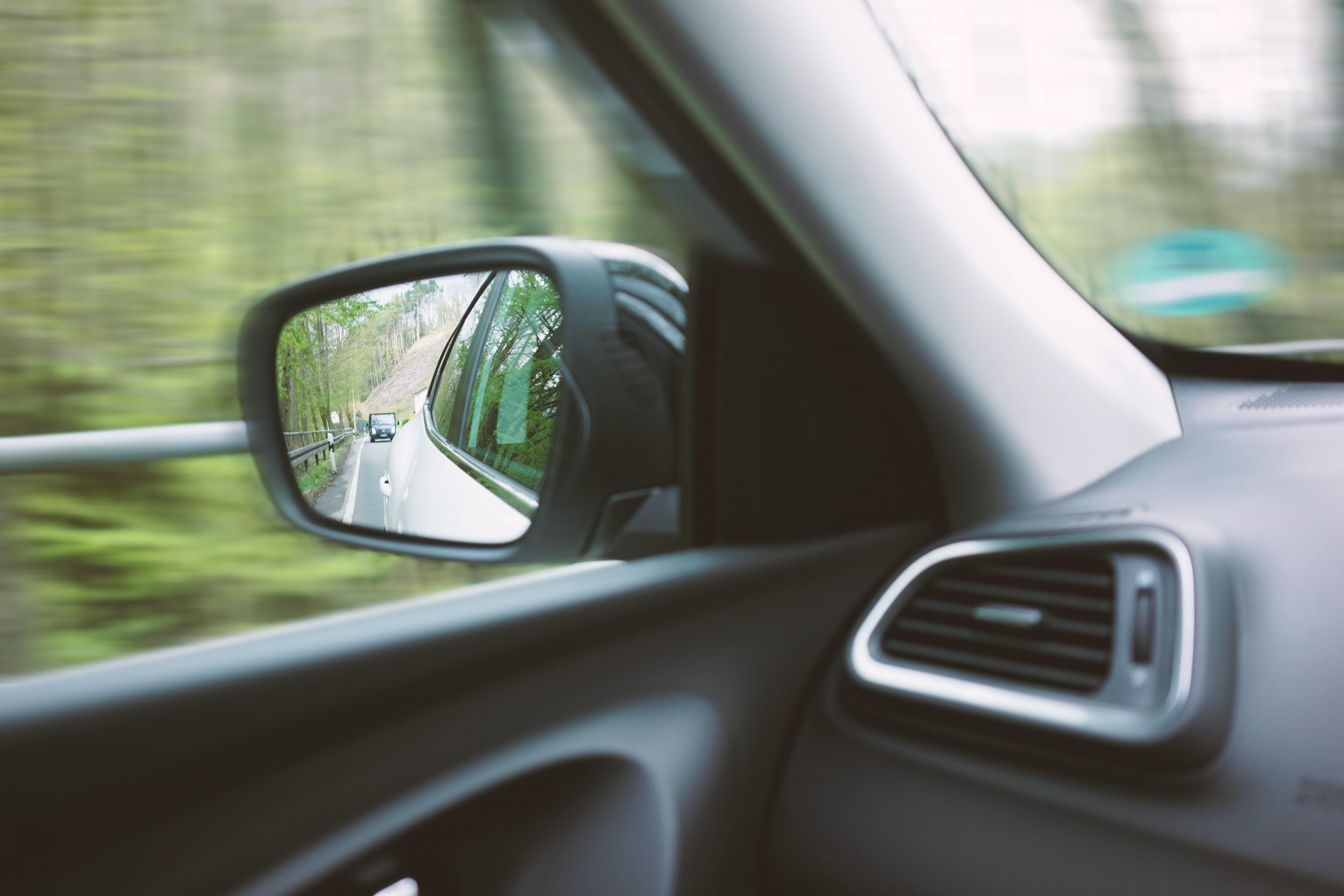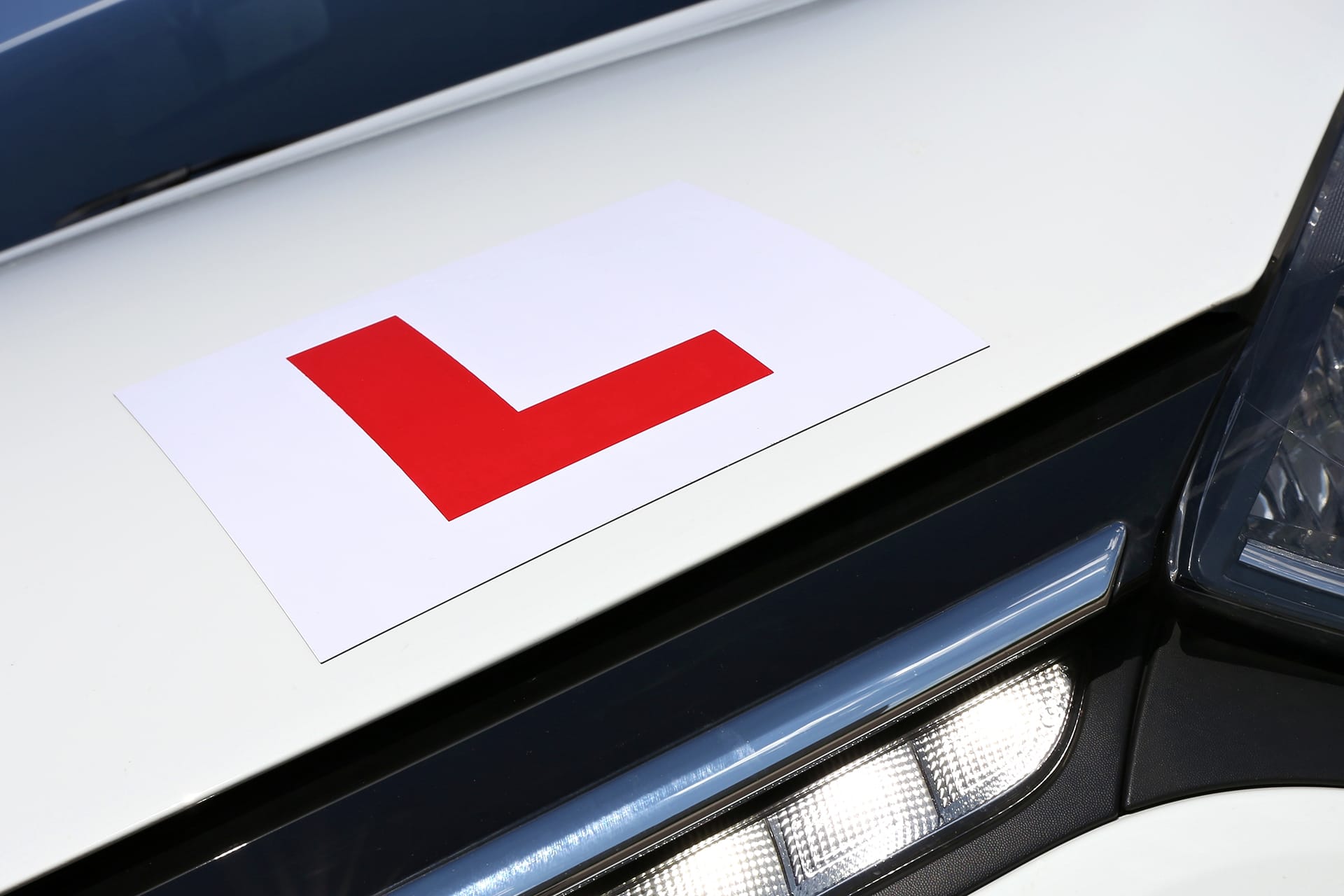Driving requires your full attention to your surroundings, but no matter how vigilant you are, some areas around your vehicle are not visible through your mirrors. These areas are known as blind spots.
Understanding blind spots and knowing where they are and how to check them is crucial for road safety, as failing to do so can lead to accidents. In this blog we’ll explore why blind spots are important, the different types of blind spots and how to check them effectively.
What is a blind spot when driving?
A blind spot refers to any area around your vehicle that you cannot see while looking forward or through your mirrors. Despite advancements in technology and the different shapes of cars, blind spots still exist for all drivers.
Blind spots are not just a problem for car drivers. Motorcyclists, cyclists and even pedestrians can experience blind spots, though they may be positioned differently.
Recognising and checking these blind spots is essential to prevent collisions and ensuring the safety of everyone on the road.
Why are blind spots important while driving?
Blind spots are especially important while driving because they hide potential hazards. Failing to check your blind spots can lead to severe accidents, particularly when changing lanes, merging onto motorways, or turning at junctions. According to government statistics, a significant number of road traffic accidents can be attributed to drivers not checking their blind spots.
By being aware of these spots and taking the time to check them, you can significantly reduce the risk of accidents, protecting both yourself and others on the road.
Where are the blind spots in a car?
Cars typically have multiple blind spots, each presenting unique challenges. While all drivers share some common blind spots, others may vary due to factors such as the size of the vehicle, vehicle type and driver’s positioning.
Over the driver’s right shoulder
The blind spot over the driver’s right shoulder is most commonly encountered when changing lanes or merging into traffic on the right-hand side. This area is out of the peripheral vision and not shown in the mirrors, making it a particularly hazardous spot. Drivers should always look over their right shoulder before making any movement in this direction to ensure the lane is clear of other vehicles and it’s safe to move over.
Passenger side blind spot
The passenger side blind spot is similar to the right shoulder blind spot but is located on the left side of the vehicle for right-hand drive cars. This spot becomes particularly relevant when overtaking vehicles or changing lanes. Like with the right shoulder blind spot, a quick check over your shoulder to ensure this blind spot is clear is essential before making any movement.
Rear blind spot
The rear blind spot is the area directly behind your vehicle that isn’t visible through your rearview mirror. This blind spot is particularly dangerous when reversing, as pedestrians, cyclists, or even other vehicles may not be immediately visible. Using your side mirrors and physically turning to look behind you can help reduce the risks associated with this blind spot.
A-pillar blind spot
The A-pillar blind spot is caused by the structural support on either side of a car’s windscreen. This spot can obscure your view, particularly when turning at junctions, navigating roundabouts, or pulling out of a driveway. The risk is heightened when pedestrians or cyclists are crossing the road, as they can be easily missed if this blind spot isn’t thoroughly checked. It’s crucial to be aware of this blind spot and adjust your position slightly to get a better view when making these manoeuvres.
When should you check blind spots?
Checking blind spots is crucial when driving, but specifically in these situations:
- Moving from a stationary position: whether pulling out of a parking space or starting from a stopped position at the side of the road, checking your blind spots ensures you don’t move into the path of an oncoming vehicle, cyclist, or pedestrian.
- At junctions and roundabouts: blind spots can conceal other vehicles or cyclists, making it vital to check before turning onto a junction or entering a roundabout
- Changing lanes on motorways: when changing lanes, particularly on dual-carriageways or motorways, checking blind spots can help to prevent side-impact accidents.
How to check blind spots while driving
Properly checking blind spots involves more than a quick glance in the mirror. Ensure you’re correctly checking your blind spots by following this step-by-step guide as per The Highway Code:
- Check your mirrors: start by checking your rearview and side mirrors to get a general sense of the traffic around you
- Look over your shoulder: physically turn your head to check the blind spot in the direction you intend to move
- Signal your intention: always indicate your intention to move before doing so, giving others time to react.
- Make your move safely: if the area is clear, proceed with your manoeuvre, merge or turn
Can you fail your driving test for not checking blind spots?
Not checking your blind spots during a driving test can result in a fault. If you fail to check a blind spot when necessary, such as before moving off or changing lanes, the examiner may mark it as a fault. If this happens in a potentially dangerous situation, it could be classified as a major fault leading to an automatic fail of your driving test. Therefore, it’s crucial to incorporate blind spot checks into you routine driving habits.
Car blind spots in The Highway Code
The Highway Code provides clear guidance on blind spots, emphasising their importance for safe driving.
- Rule 159 highlights the need to check blinds spots before moving off
- Rule 161 advises regular checks whilst driving
- Rule 163 specifically mentions the importance of ensuring the road is clear when overtaking, including checking blind spots
Familiarising yourself with these rules is essential for both learner drivers and experienced drivers.
Get learner car insurance with Dayinsure
With Dayinsure, you can get fully comprehensive temporary learner driver insurance, ensuring you are protected whilst you gain valuable driving experience. Enjoy peace of mind whilst focusing on mastering the road with Dayinsure.
Our learner insurance is flexible, with cover available from 1 day up to 5 months. Get a quote today.



